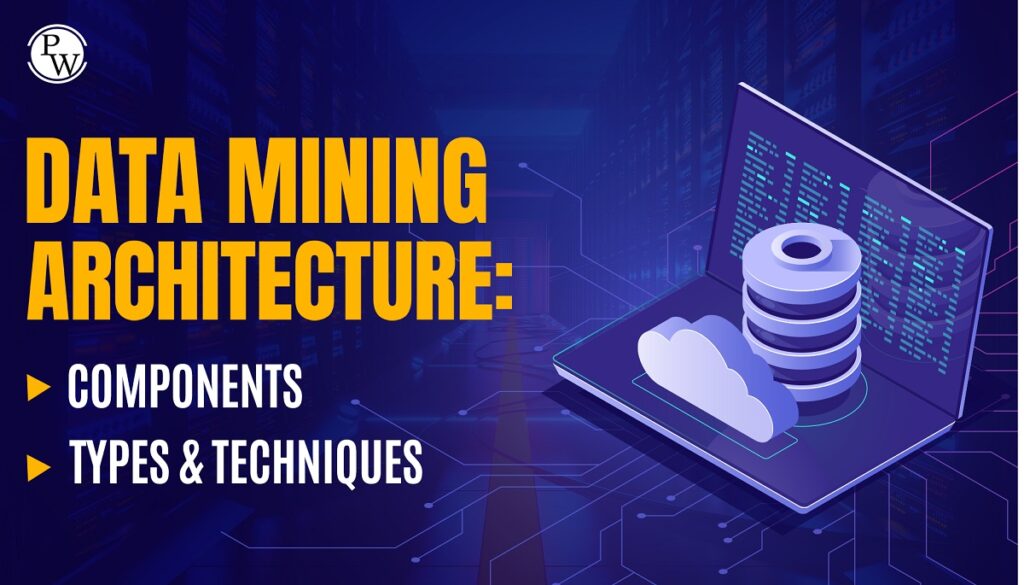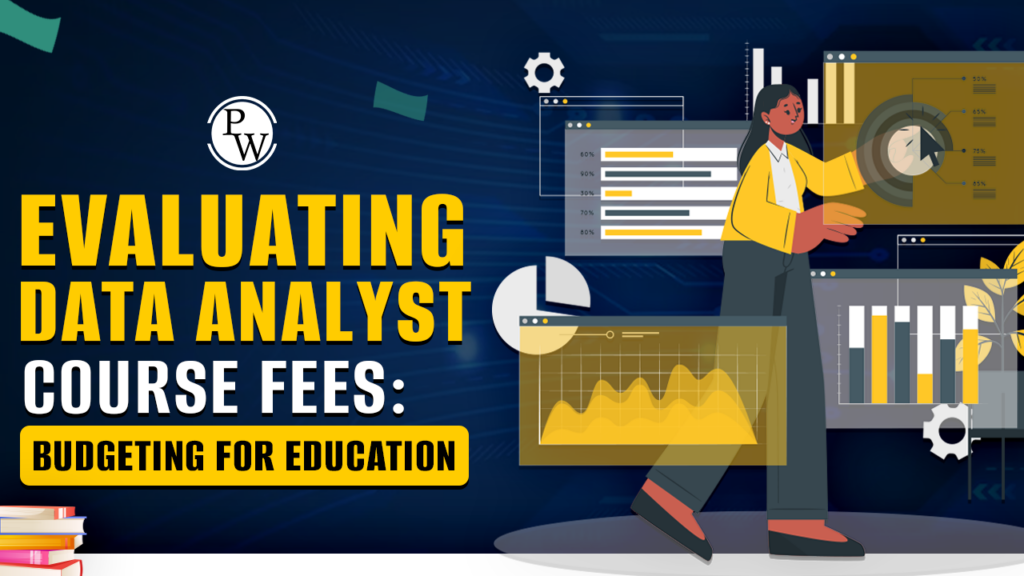Python for data analysis opens up a realm of career opportunities, empowering individuals to unlock the true potential of data in Python. In this era, Python is a versatile and powerful tool for analyzing insights from diverse datasets.
Python for Data Analysis: Python for data analysis has become a valuable skill set in the realm of data science, providing professionals with a powerful tool to extract meaningful insights from complex datasets. As the demand for data-driven decision-making continues to increase across various industries, proficiency in Python for data analysis has emerged as a key competency.
This versatile programming language, coupled with its rich ecosystem of libraries such as Pandas, NumPy, and Matplotlib, empowers analysts and data scientists to manipulate, explore, and visualize data with unparalleled efficiency.
In this dynamic landscape, mastering Python for data analysis opens the door to unlocking valuable patterns, trends, and knowledge hidden within the vast sea of information, making it an essential skill for those navigating the data-centric challenges of today’s professional landscape. Physics Wallah presents ‘Mastering Data Analytics,’ a dynamic and comprehensive course designed to empower participants with the essential skills and knowledge required to become proficient full-stack data analysts.
How is Python Used for Data Analysis?
Python is widely used for data analysis due to its versatility, extensive libraries, and easy syntax. Here’s how Python is commonly employed in the field of data analysis:
1) Libraries:
- NumPy: Essential for numerical operations and working with arrays. It provides high-performance multi-dimensional arrays and tools for working with them.
- Pandas: Offers data structures like DataFrames and Series, which are highly efficient for data manipulation and analysis.
- Matplotlib and Seaborn: Used for data visualization. Matplotlib provides a wide variety of plots, and Seaborn simplifies the process of creating informative and attractive statistical graphics.
- Scikit-learn: A machine learning library that includes data mining and analysis tools. It provides simple and efficient tools for data analysis and modeling.
2) Data Cleaning and Preparation:
- Python allows for easy handling of missing data, outliers, and inconsistencies using Pandas.
- Data cleaning and preprocessing tasks can be efficiently performed by handling duplicates or transforming data types.
3) Exploratory Data Analysis (EDA):
- Python facilitates EDA through statistical functions and visualization tools. Analysts can quickly explore data distributions, correlations, and trends.
- Jupyter Notebooks provide an interactive environment, allowing analysts to document and share their analyses step by step.
4) Statistical Analysis:
- Python’s SciPy library is used for scientific and technical computing. It includes modules for optimization, integration, interpolation, eigenvalue problems, and more.
- Statsmodels is another library that provides classes and functions for estimating and testing statistical models.
5) Machine Learning:
- Python is a prominent language for machine learning tasks. Scikit-learn, TensorFlow, and PyTorch are popular libraries for building and training machine-learning models.
- The simplicity of Python syntax allows for quick implementation and testing of machine learning algorithms.
6) Big Data:
Python can integrate with big data technologies. Libraries like PySpark enable interaction with Apache Spark, making it suitable for processing large-scale datasets.
7) Web Scraping:
Python’s libraries, such as Beautiful Soup and Scrapy, are widely used for web scraping to collect website data.
Also read: What is Data Analysis? Responsibilities, Types, Qualifications, How to Become One
Which Python Tools are Used for Data Analysis?
Several Python tools and libraries are widely used for data analysis due to their efficiency and versatility. Here are some essential Python tools for data analysis:
1) NumPy and Pandas:
- NumPy (Numerical Python): It supports large, multi-dimensional arrays and matrices and mathematical functions to operate on these arrays. NumPy is the foundation for many other Python data analysis libraries.
- Pandas: This library offers data structures like DataFrame and Series, powerful tools for manipulating and analyzing structured data. It allows for easy handling of missing data, data alignment, and grouping.
2) Matplotlib and Seaborn:
- Matplotlib: A widely used 2D plotting library for creating static, animated, and interactive visualizations in Python. It provides a variety of charts and graphs for data representation.
- Seaborn: Built on Matplotlib, Seaborn is specifically designed for statistical data visualization. It simplifies the creation of aesthetically pleasing and informative statistical graphics.
3) SciPy:
- SciPy builds on NumPy and provides additional functionality for scientific and technical computing. It includes modules for optimization, integration, interpolation, eigenvalue problems, and more.
4) Scikit-learn:
- A machine learning library that provides simple and efficient tools for data mining and data analysis. It includes various algorithms for classification, regression, clustering, dimensionality reduction, and model selection.
5) Statsmodels:
- A library for estimating and testing statistical models. It supports linear and non-linear regression models, time-series analysis, and statistical tests.
6) Jupyter Notebooks:
- Jupyter Notebooks provide an interactive computing environment for creating and sharing documents that contain live code, equations, visualizations, and narrative text. They are widely used for exploratory data analysis and creating reproducible research.
7) Pandas-profiling:
- This library generates a profile report from a Pandas DataFrame, providing a quick overview of the dataset, including statistics, correlations, and missing values.
8) SQLalchemy:
- For working with SQL databases, SQLalchemy allows Python developers to interact with databases using Python instead of SQL queries directly. This is particularly useful for integrating data from databases into the analysis workflow.
9) Plotly and Bokeh:
- Plotly and Bokeh are popular choices for creating interactive visualizations. They allow for creating interactive plots that can be embedded in web applications or Jupyter Notebooks.
10) Pymysql and Psycopg2:
- These libraries facilitate connections to MySQL and PostgreSQL databases, respectively, enabling data analysts to work with data stored in relational databases.
Also read: Essential Data Analytics Tools for Successful Analysis
What Python Skills are Required for Data Analysis?
Here’s a table outlining the key Python skills required for data analysis:
| What Python skills are required for data analysis? | |
| Python Skill | Description |
| Programming Fundamentals | Strong foundational knowledge of Python syntax, data types, control structures, and functions. |
| NumPy | Proficiency in working with NumPy arrays, mathematical operations, and linear algebra in Python. |
| Pandas | Ability to manipulate and analyze structured data using Pandas DataFrames and Series. |
| Matplotlib | Skill in creating static, animated, and interactive visualizations for effective data analysis. |
| Problem-Solving Skills | Strong analytical and problem-solving skills to approach complex data analysis challenges. |
| Seaborn | Familiarity with Seaborn for creating appealing statistical graphics and enhancing Matplotlib plots. |
| Communication Skills | Ability to communicate findings and insights effectively, both verbally and through visualizations. |
| Scikit-learn | Understanding and application of machine learning algorithms for data analysis tasks. |
| SciPy | Proficiency in using SciPy for scientific and technical computing tasks in Python. |
| Jupyter Notebooks | Experience with creating interactive and shareable notebooks for documenting data analyses. |
| Statsmodels | Knowledge of Statsmodels for estimating and testing statistical models. |
| Data Cleaning and Preprocessing | Ability to clean and preprocess data effectively, handling missing values, outliers, etc. |
| SQL and Database Skills | Basic understanding of SQL for querying databases and working with relational data. |
| Data Visualization Techniques | Knowledge of various data visualization techniques to communicate insights effectively. |
| Exploratory Data Analysis (EDA) | Skill in performing EDA to understand data distributions, patterns, and relationships. |
| Version Control (e.g., Git) | Familiarity with version control systems like Git for tracking changes in code and analyses. |
Recommended Technical Course
- Full Stack Web Development Course
- Generative AI Course
- DSA C++ Course
- Java+DSA 1.0 Course
- Data Analytics Course
- Data Science with ML 1.0 Course
How Do I Become a Python Data Analyst?
Learning programming foundations, understanding crucial libraries and tools, obtaining hands-on experience, and consistently enhancing your skills are all part of the process of becoming a Python data analyst. Here’s a detailed guide to become a Python data analyst:
Step 1: Learn Python Basics
Set Up Your Development Environment:
- Install Python on your machine.
- Choose a code editor or integrated development environment (IDE) like VSCode, PyCharm, or Jupyter Notebooks.
Learn Python Fundamentals:
- Understand basic syntax, data types, control structures, and functions.
- Familiarize yourself with concepts like loops, conditionals, and error handling.
Step 2: Understand Data Structures and Algorithms
Data Structures:
- Learn about lists, dictionaries, sets, and tuples.
- Understand how to manipulate and analyze data using these structures.
Algorithms:
- Study basic algorithms and their time complexities.
- Gain a solid understanding of sorting and searching algorithms.
Step 3: Explore NumPy and Pandas
NumPy:
- Learn to work with NumPy arrays and perform mathematical operations.
- Understand linear algebra concepts used in data analysis.
Pandas:
- Master Pandas for data manipulation and analysis using DataFrames.
- Explore methods for handling missing data and merging datasets.
Step 4: Dive into Data Visualization
Matplotlib and Seaborn:
- Learn Matplotlib for creating static and interactive visualizations.
- Explore Seaborn for statistical data visualization.
Plotly and Bokeh (Optional):
- Gain additional skills in interactive and web-based visualizations.
Step 5: Get Hands-On with Real Data
Kaggle Datasets:
- Participate in Kaggle competitions or explore datasets.
- Apply your Python skills to analyze real-world data problems.
Personal Projects:
- Work on personal projects to showcase your skills.
- Build a portfolio with detailed explanations of your analyses.
Step 6: Learn Machine Learning Basics
Scikit-Learn:
- Introduce yourself to machine learning algorithms using Scikit-Learn.
- Understand concepts like supervised and unsupervised learning.
Statsmodels (Optional):
- Explore Statsmodels for statistical modeling and hypothesis testing.
Step 7: Experiment with Data Cleaning and Preprocessing
Data Cleaning:
- Develop skills to clean and preprocess messy datasets.
- Handle missing values, outliers, and inconsistent data.
Step 8: Master Jupyter Notebooks
Jupyter Notebooks:
- Learn to create interactive and shareable notebooks.
- Use notebooks for documentation and presentations.
Step 9: Enhance SQL and Database Skills
SQL Basics:
- Gain a basic understanding of SQL for data querying.
- Practice working with databases.
Step 10: Focus on Data Analysis Techniques
Exploratory Data Analysis (EDA):
- Develop skills in EDA to uncover patterns and insights.
- Learn to use descriptive statistics for analysis.
Step 11: Version Control and Collaboration
Git and GitHub:
- Learn version control using Git for tracking changes.
- Collaborate with others on GitHub projects.
Step 12: Continuous Learning
Stay Updated:
- Follow industry blogs, forums, and resources to stay updated.
- Engage with the data science community.
Networking:
- Attend data science meetups, webinars, and conferences.
- Connect with professionals in the field.
Online Courses and Certifications:
- Consider specialized online courses like Mastering Data Analytics or certifications to deepen your knowledge.
Step 13: Build a Strong Portfolio
Portfolio:
- Showcase your projects, analyses, and skills in a well-organized portfolio.
- Provide explanations for your approach and results.
Step 14: Job Search and Interviews
Apply for Positions:
- Start applying for entry-level data analyst positions.
- Tailor your resume and cover letter to highlight your skills and projects.
Prepare for Interviews:
- Practice common data analyst interview questions.
- Showcase your portfolio during interviews.
Continuous Improvement:
- Act on feedback received during interviews.
- Continue learning and adapting to industry trends.
By following these steps, you’ll build a strong foundation and practical skills to pursue a career as a Python data analyst. Remember to continuously improve your skills, stay curious, and adapt to evolving industry needs. Good luck on your journey!
Also read: 7 Best Data Analysis Courses for Beginners in 2023
Python for Data Analysis Example
Here is an example of using Python for data analysis:
# Importing necessary libraries
import pandas as pd
import matplotlib.pyplot as plt
# Creating a sample dataset
data = {
‘Name’: [‘Alice’, ‘Bob’, ‘Charlie’, ‘David’, ‘Emily’],
‘Age’: [25, 30, 22, 35, 28],
‘Salary’: [50000, 60000, 45000, 70000, 55000],
}
# Creating a Pandas DataFrame
df = pd.DataFrame(data)
# Displaying the DataFrame
print(“Original DataFrame:”)
print(df)
# Performing basic data analysis
print(“\nBasic Data Analysis:”)
print(“Mean Age:”, df[‘Age’].mean())
print(“Maximum Salary:”, df[‘Salary’].max())
# Visualizing data
plt.bar(df[‘Name’], df[‘Salary’])
plt.xlabel(‘Name’)
plt.ylabel(‘Salary’)
plt.title(‘Salary Distribution’)
plt.show()
This example does the following:
- Creates a sample dataset with information about individuals.
- Uses Pandas to create a DataFrame from the dataset.
- Displays the original DataFrame.
- Performs basic data analysis (calculating mean age and maximum salary).
- Visualizes the data using Matplotlib by creating a bar chart showing the salary distribution.
The Physics Wallah “Mastering Data Analytics” course is tailored for individuals aspiring to thrive in the dynamic field of data analytics, providing them with a well-rounded skill set and the confidence to tackle real-world data challenges. Enroll in ‘Mastering Full Stack Data Analytics’ by Physics Wallah and embark on a journey towards becoming a competent and sought-after full-stack data analyst.”
Also read: Java Or Python: Which Language Should You Learn in 2023?
FAQs
Why choose Python for Data Analysis?
Python is chosen for data analysis due to its simplicity, readability, and a rich ecosystem of libraries. It offers powerful tools like Pandas and NumPy, making data manipulation efficient. Additionally, Python's versatility extends to machine learning and statistical analysis.
How does Pandas contribute to data analysis in Python?
Pandas is a fundamental library for data analysis in Python. It provides a DataFrame structure for handling and manipulating tabular data. With Pandas, users can perform tasks such as cleaning data, handling missing values, merging datasets, and applying various transformations.
What is the role of NumPy in Python for Data Analysis?
NumPy is essential for numerical operations and array manipulation in Python. It introduces the NumPy array, a powerful data structure allowing efficient mathematical operations on large datasets. NumPy is particularly valuable for handling multi-dimensional arrays, a common data-analysis requirement.
How can I handle missing data in Python?
Pandas provides several methods for handling missing data, including dropping missing values using dropna(), filling missing values with specific values using fillna(), and interpolating missing values. These methods offer flexibility in managing datasets with missing information.
Are there online courses for learning Python for Data Analysis?
Yes, numerous online courses and platforms are offering Python for Data Analysis. Platforms like Coursera and Physics Wallah offer specialized courses and interactive learning experiences focused on Python and data analysis.





